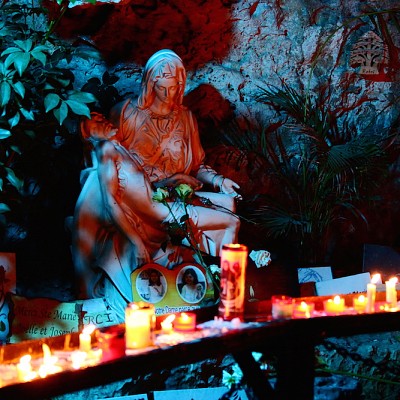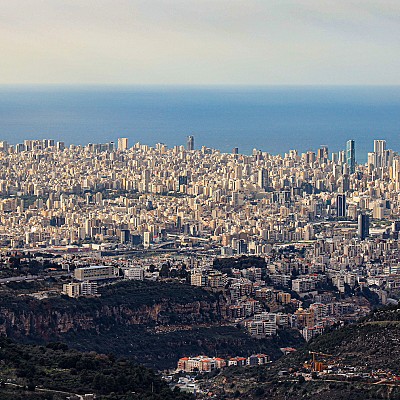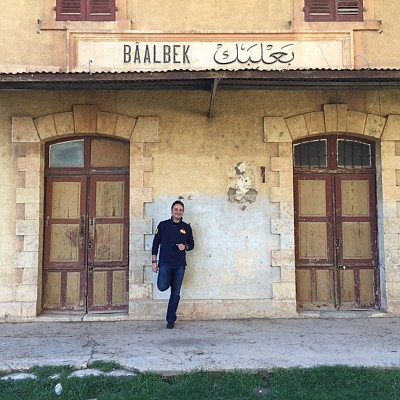
Three young men from Lebanon spent two days in nature: Mark Beiruti explaining the plant and forest wealth, Anthony Rahayel visiting places with Lebanese food and tasting its best, and Elie Ahwash, with a heart full of hope, explaining the meanings of the place. Three people in the Qadisha Valley, which is included in the UNESCO World Heritage List, next to the Cedar of God Forest, walking around with a camera that captures the wonderful composition and the magic of serenity. Here is the greatness, at an altitude of 500 meters in depth and 1,500 meters in height, a witness to the resilience of a land that is invincible to defeat.
A two-part documentary entitled “A Journey in the Valley” (MTV), about the trip of three young men to the Valley of the Saints in northern Lebanon. It is, in fact, a human journey towards absolute beauty, where hope is still the son of the earth. An ancient chapter in the history of the Maronites, evident in the awe of the place and the determination of those who lived there to endure and endure. This is what God gave to Lebanon: goodness, blessing, and blessing of blessings: nature. The three of them wander among the trees containing birds' nests and their chirping to the sound of bells ringing. A symphony of hope as far as the eye can see.
Elie Ahwash poetically explains the valley's historical features. It consists of five districts, including Mar Mtanios Qazhaya and Mar Lesha. Hermits who lived in the open, the camera follows their footsteps, when they obeyed nature and softened the rock. In Qazhaya, the three recalled the first printing press in the East. It was in 1585 when printing tools began to arrive, and the first book, the Book of Psalms, was printed in 1610. The valley embraces a cultural and intellectual heritage, with books dating back hundreds of years that still bear witness to the civilization of science and light.
It took about two months to prepare the documentary. The young men are equipped with information and a love for the land. They present messages of hope for the homeland and make us believe that it is like a phoenix rising from its ruins. “Come early, before the weekend rush. Come for nature,” advises Anthony Rahayel, with an appeal: “Don’t throw dirt on the ground. defective".
3,500 caves inhabited by monks in the great valley, among plants and trees. Since the mountains were stubborn, the hermits made mountainous hills, that is, they turned them into hills. And all of them are areas of goodness. Walking was difficult for humans and animals, however, they built roads and made life easier. More than 600 hermits tamed the rocks and built small rooms in them to deter the storms and summer flames. Some of them remained in contact with the residents, consulting them about their affairs, and some of them chose to devote themselves to asceticism. They lit incense at sunset, and because of their abundance in the valley, the smoke spread out in the form of a cloud that covered the sky.
A trip that serves as a break from life and enjoyment of it at the same time. Something like hugging the soul and providing it with dreams. Stretching the hands in times of distress and embracing the heart in moments of bleeding. Walking breaks, eating sessions. The camera is on Anthony Rahil, the skilled connoisseur, wandering between food places during his trips to encourage domestic tourism. He has his phone in his hand, photographing the delicious Lebanese cuisine, and Elie Ahoush explains: “Bulgur is included in the hermits’ meals, which usually consist of two ingredients. Meat was only available on occasion. They selected goat meat, and also benefited from its milk and cheese. In the beginning, they were known as “kibbet al-haila”, and the name is evidence of its benefits in pulling tricks. They also called it (monk's kibbeh) because it was austere and devoid of meat. Later, they introduced raw kibbeh and pounded it in the font. Even tabbouleh wasn't like this. Watercress was included in the ingredients instead of parsley, and tomatoes were absent. The mixture also included oil. Bulgur was present in every Lebanese meal.”
An enjoyable journey, for its simplicity and meaning. “The sweetest country in the world,” Anthony Raheel flashes a broad smile as he talks about Lebanon, evident in the Qadisha Valley, and Mark Beiruti adds that sacrifices cannot be in vain. The three stand, as the sun has set and the weather is cold, telling people the lesson of the visit, and repeating, out of love, that Lebanon is a land of steadfastness, and what happened to our ancestors was something of the bitterness of our days, and they persevered.
Charbel Tawk from Bcharre accompanies the three travelers at the Qadisha Valley stations, as a guide and guide. The stop now is in Hadshit and another walk is in the Monastery of St. John. Every time one takes a step forward, one hears the sound of water and the chirping of birds. “They dug in the rock, oh, they dug in the rock,” they repeat while walking along the roads decorated with wine presses and mills, intertwined with nets of love, all leading to Qadisha. And with the types of trees, cypress, pine, poplar, walnut, willow, oak and oak, and the colors of nature in the fall, it was a time when the documentary was filmed with a big heart.
And then, in Qannoubine, where the village contains 14 houses, a church, and two rivers, and the roads are harsh and impassable. Before the final stop in Diman, a pause with Lebanese food at the “Tita Mantoura” house. A ninety-five-year-old woman, still in good health, greets and welcomes guests with welcome coffee and chicken rice. Visitors are surprised by the presence of pine nuts in the stew, as the price is crazy. The bounties of the earth and nature, so increase your praise and gratitude, O man. “I wish life was like this,” the traveler laments on behalf of all Lebanese.






































